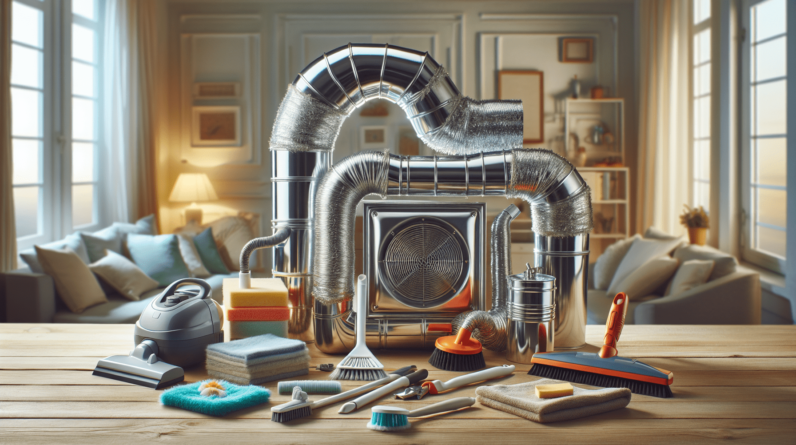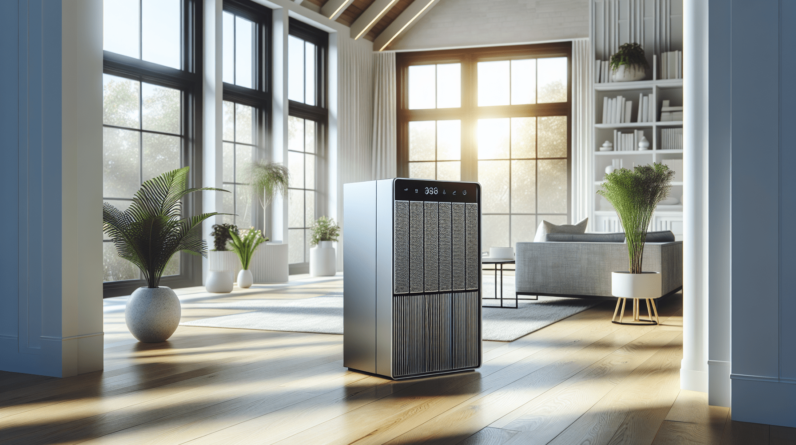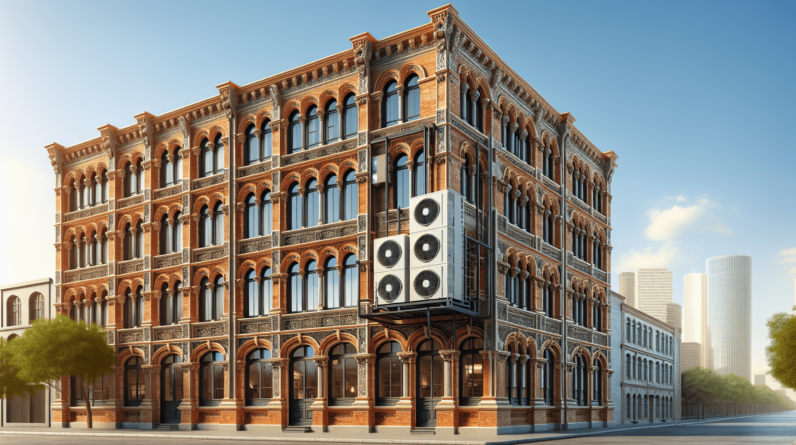

Are you feeling uncomfortable in your small space during the hot summer months? The quest for a cool and pleasant indoor environment can be challenging, especially if you have small windows. Lately, many people just like you are on the lookout for efficient climate control methods that work with the constraints of smaller windows. Let’s discuss various options for air conditioners that are perfectly suited for your needs.
Understanding Air Conditioners for Small Windows
Air conditioners specifically designed for small windows offer an essential solution for those living in compact spaces. These units come in various sizes and models, but the key is that they are compact, easy to install, and can fit into smaller openings.

Why Choose Small Window Air Conditioners?
You might be wondering why you should opt for a small window air conditioner rather than a central air system or a portable unit. Here are some reasons that might resonate with you:
-
Space Efficiency: With limited window space, large units simply won’t fit. Small window air conditioners provide a targeted and space-saving cooling solution.
-
Energy Efficiency: Many smaller models are designed to be more energy-efficient, minimizing your electricity bill during the hot months.
-
Ease of Installation: Installing a small window air conditioner is typically a straightforward process. Most models come with installation kits, which means you won’t need to call a technician.
-
Cost-Effective: Small window units are often less expensive than other air conditioning alternatives, both in initial purchase and in energy costs.
Types of Small Window Air Conditioners
When shopping for an air conditioner that fits small windows, you’ll come across a few different types, each with unique features.
1. Window Air Conditioners
Window air conditioners are specifically designed to fit neatly within a window frame. They draw air from the outside and cycle it through the unit to cool your living space.
-
Advantages: Installation is typically simple; they can cool individual rooms effectively; many models include energy-saving features.
-
Considerations: You’ll need to ensure your window is the right size for the unit. Some might block your view or natural light.
2. Through-the-Wall Air Conditioners
Through-the-wall units require a professional installation since they are mounted into the wall itself. However, they can be a more permanent cooling solution that frees up your window space.
-
Advantages: They provide consistent cooling without obstructing your window.
-
Considerations: Installation is usually more complicated and may require additional costs.
3. Portable Air Conditioners
Portable air conditioners don’t fit through a window but can cool a room without being an eyesore. They come with exhaust hoses that you can vent through a window.
-
Advantages: They can be moved from room to room and don’t require permanent installation.
-
Considerations: They require more space than window units and often have a less efficient cooling system.
Key Features to Look For
When selecting an air conditioner for small windows, it’s important to consider various features that enhance performance, usability, and efficiency.
Energy Efficiency Rating (EER)
The Energy Efficiency Rating is crucial for understanding how well an air conditioner uses energy. A higher EER means a more efficient system.
- Tip: Look for units with an EER of 12 or higher for better efficiency.
BTU Capacity
British Thermal Units (BTU) measure cooling output. For small spaces, you’ll need to match the BTU capacity of the air conditioner to the size of the room.
- General Guideline:
- Up to 150 sq. ft.: 5,000 BTUs
- 150 to 250 sq. ft.: 6,000 BTUs
- 250 to 350 sq. ft.: 7,000 BTUs
Noise Levels
Consider how noisy the unit will be when in operation. Many modern air conditioners come with noise-reduction technology.
- Tip: Look for units that operate at 50 dB or lower for quiet performance.
Installation Tips for Small Window Air Conditioners
Setting up your new air conditioner can be done in just a few easy steps. A proper installation will ensure maximum efficiency and longevity.
Preparing Your Window
-
Check Dimensions: Measure the window size to confirm the air conditioner will fit properly.
-
Clear Obstructions: Remove screens or other obstructions that may impede installation.
Installing the Unit
-
Follow Instructions Carefully: Each model has its own installation instructions. Read them thoroughly.
-
Level the Unit: Make sure to tilt the air conditioner slightly towards the outside. This helps with drainage.
-
Secure with Brackets: Use the brackets that come with the installation kit to secure the unit in place.
Sealing Air Gaps
To improve efficiency, be sure to seal any gaps around the unit with weatherstripping or foam insulation. This minimizes air leaks and energy loss.

Maintenance and Care
Keeping your air conditioner well-maintained will ensure it runs efficiently and lasts longer. Here are some easy tips to help you out.
Cleaning Filters
-
Frequency: Check and clean your filters every month, especially during peak usage.
-
How to Clean: Remove the filter, rinse it with water, and let it dry completely before reinserting.
Cleaning Coils
-
Importance: Dust and dirt can accumulate on the coils, reducing efficiency.
-
How to Clean: Use a coil cleaner and a soft brush. If needed, call a professional for significant cleaning.
Inspecting Drainage
Make sure the drainage system is clear and not blocked. Clogged drainage can lead to water accumulation and potential damage.
Troubleshooting Common Issues
You may run into some problems while using your air conditioner. Here are some common issues and solutions that can help.
The Unit Isn’t Cooling Properly
-
Check Filters: If air isn’t blowing freely, your filters may be clogged.
-
Make Sure Windows Are Sealed: Look for any gaps where cool air might escape.
Water Leakage
-
Inspect Drainage: Ensure the drainage system is functioning correctly.
-
Check for Blockages: Clean the drain pan and tube.
Unusual Noises
-
Loose Parts: Look for any loose components that may need tightening.
-
Inspect the Fan: A malfunctioning fan can cause unusual sounds, indicating it may need repair.
Energy-Saving Tips
Keeping your energy costs down while staying comfortable is essential. Here are some practical tips.

Setting the Right Temperature
Aim to keep your thermostat at around 78°F (25-26°C) when you’re home, and consider raising it a few degrees when you’re away.
Use Fans in Addition
Using fans in conjunction with your air conditioner can help distribute cool air more effectively, allowing you to set your thermostat a bit higher.
Block Sunlight
Using blackout curtains or shades during peak sunlight hours can keep your space cooler. Reflective window films may also help reduce heat intrusion.
Frequently Asked Questions
You may still have some lingering questions about small window air conditioners. Here are some that come up often:
Can I use a regular window air conditioner for small windows?
Most window air conditioners are manufactured in standard sizes, so ensure you check the specific dimensions of your window against the unit’s specifications.
Do I really need to seal the gaps around the air conditioner?
Yes, sealing gaps minimizes the influx of warm air from outside, making your air conditioner work more efficiently and saving on energy costs.
How do I know if I need a larger air conditioner?
If your air conditioner runs continuously but the space still feels warm, you may need a unit with a higher BTU rating.
Is it worth getting a portable unit instead?
Portable units are convenient but typically less efficient for smaller spaces. If you have the option, a window air conditioner will likely provide better cooling.
Conclusion
With summer heat challenging the comfort of small living spaces, investing in a suitable air conditioner for your small windows can be a game-changer. Understanding your specific needs, from choosing the right type of air conditioner to installation and maintenance, can lead you to a cool oasis even on the hottest days. Remember, finding the right solution will enhance not only your comfort but also your overall indoor air quality. So, go ahead and take those steps toward a perfectly cool home!






